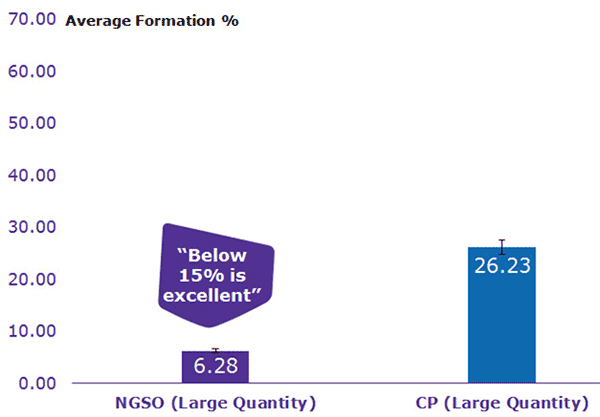Minimizing Dimerization of Next-Generation Sequencing Adapters
Case Study
The Project Situation
A manufacturer of next-generation sequencing (NGS) kits was experiencing high levels of adapter dimer formation with custom adapters sourced from its current oligonucleotide vendor. This was unacceptable because the material was for commercial kit production, and the manufacturer wanted the product to work ‘right out of the box’ without its customers having to do post-library-preparation dimer clean up.
Our Operational Support
The manufacturer turned to Next-Gen Sequencing Oligos (NGSO) as a potential solution to the problem. Within our contract manufacturing environment, we worked closely with the manufacturer’s R&D team to provide the adapters for the intended NGS kit. The goal was to reduce dimerization significantly compared to the material from the current oligonucleotide vendor.
The Customized Solution
Following consultation with our R&D and production teams, the manufacturer’s R&D team opted to test NGSO-Gold, the highest-quality option available. For this project, constant communication and open dialogue was key between both company’s teams. This allowed for the sharing of data and in-depth NGS analysis in order to drive down dimerization to the lowest level possible. Following production of the test lot, a small aliquot of material was shipped to the manufacturer for functional quality control, which among other procedures, included library preparation, analysis by capillary electrophoresis, and sequencing.
Results
Customer-generated data from the test lot demonstrated that our adapters produced using NGSO-Gold showed a significantly lower propensity to dimerize compared to material from the manufacturer’s current oligonucleotide vendor, and in fact, fell well below the desired ceiling on adapter dimer formation (Figure 1). The manufacturer, now our customer, has continued to work with us on the manufacturing of custom adapters for its kits, including sending more of the work, such as specialized formatting, that was originally performed in house to us.

Figure 1.Customer-provided comparison of adapter dimer formation for NGSO-Gold versus a competing product (CP) from its current oligonucleotide vendor at the time. Adapter dimer formation was most prevalent for larger, production quantities; hence, this was the amount of material selected for testing. As can be seen, adapter dimer formation with CP was 26.23%. With NGSO-Gold, adapter dimer formation was 6.28%, which is well below the 15% desired ceiling. The exact quantities of material as well as experimental details have been redacted to maintain confidentiality.
Materials
To continue reading please sign in or create an account.
Don't Have An Account?